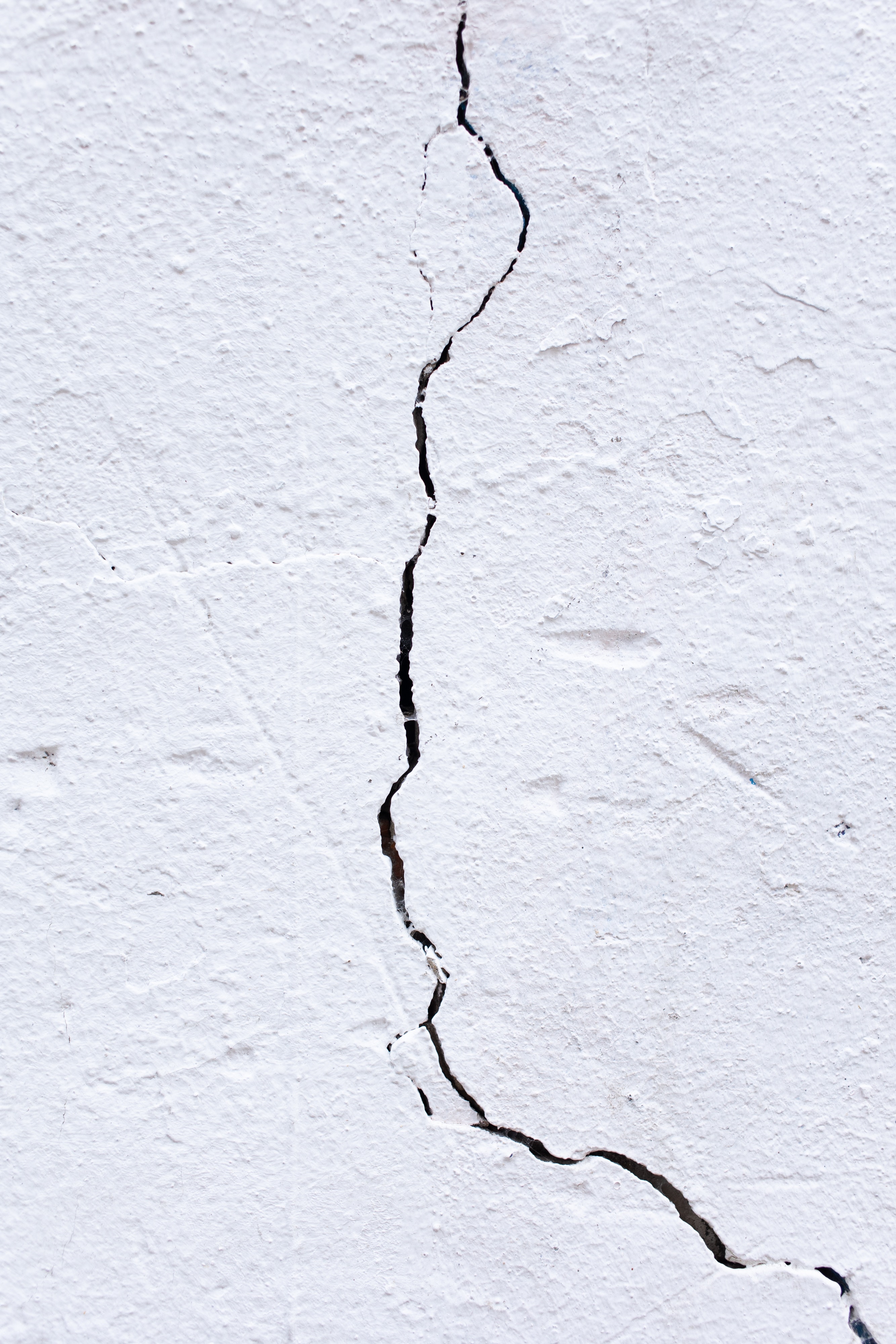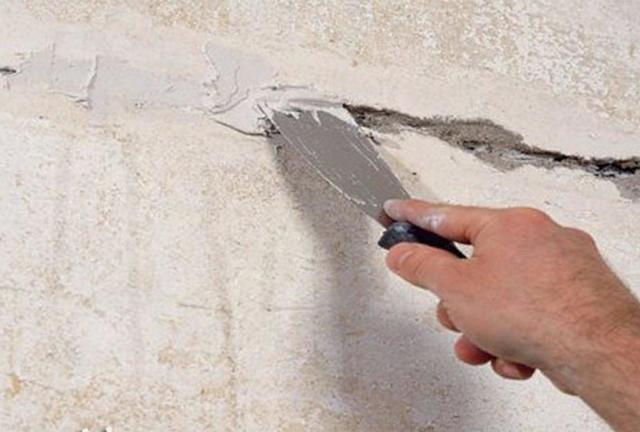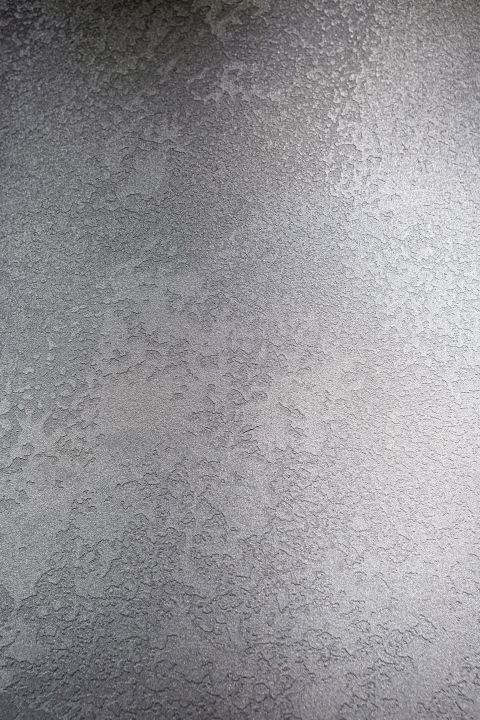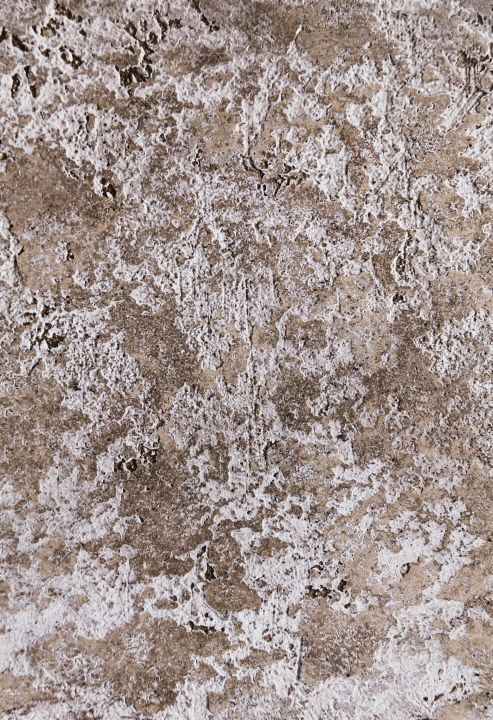Restoration of decorative plaster
Even wall coverings as resistant as plaster sometimes break down, become mouldy, stain or chip. How to repair decorative plaster for a penny, why this happens and how not to bring the coating to the need for restoration, we will tell in this article.

Causes of defects on decorative plaster
Before proceeding directly to the restoration of the coating, it is necessary to find out why the plaster on the wall collapsed, which contributed to this. This will avoid further repairs when a local crack develops into serious damage.
A common reason why plaster begins to become chipped and cracked is a violation of its application technology. For example, this is a common occurrence if the painting was done in a hot summer, and the wall surface was not wetted with water. As a result, cracks from drying out of the plaster will quickly manifest themselves.

Larger and larger cracks appear in the case of improperly performed work on leveling or cleaning the surface. Another option for why large cracks appear is the application of an excess amount of material, as well as its incomplete drying before applying paint or wax.
Another reason why it may be necessary to repair wall plaster is ignoring the characteristics of the room during the selection of material for its decoration. Most often this applies to the kitchen and bathroom
For these areas, a specific plaster will be required, which, when wet and treated with products, does not form a fungus.
If an unprepared, diluted mixture was purchased, and the plaster was prepared independently before application, this can also be the cause of defects. Wrong proportions of the main ingredients are a popular reason why cracks appear on the walls. You can avoid this if you carefully follow the instructions left by the manufacturer.
Elimination of mechanical damage on the decorative coating
Most often, from inaccurate operation, cracks, noticeable chips and damage appear on the wall surface, which can be located in the corners or in the very center. You can fix this yourself by removing the area and sealing it with a new layer of plaster.

Restoration of plaster or repair of plaster that has become cracked and formed gaps will consist of the following steps:
1. Tap the surface of the wall next to the chip, remove areas that easily move away from it.
2. Clean cracked areas with a brush, removing dust and pieces of decorative coating.
3. In order to make a fresh, restored area not so noticeable and conspicuous, it is necessary to make it the correct shape by inserting a reinforced tape into a crack or chip.
4. Apply a primer to the damaged area using PVA glue and plain water, then apply it with a brush.
5. Use a plaster mortar, choosing it correctly for the type of walls. For example, for decor applied to gypsum and its derivatives, it is better to give preference to a solution on the same basis.
6. After drying, you can additionally wipe the coating until smooth and glossy.
Then you need to proceed directly to the repair of the plaster. To do this, you must choose the same decorative material that was applied to the wall by contacting the manufacturer. Otherwise, you will need a white plaster based on acrylic copolymers, which must be tinted to the existing shade.
The finished mixture must be applied with a spatula to the damaged area, trying to repeat the pattern set on the wall. Excess plaster must be removed with a damp cloth, and then, when the surface dries, apply glazing varnish or wax. Additionally, you can treat the surface of a completely dried wall with an abrasive skin, giving a unique effect or texture.
Restoration of plaster and elimination of mold and mildew
Repair of old plaster often includes restoration not only from chips and cracks, but also the removal of stubborn dirt and mold from the surface.
To avoid the appearance of fungus, it is necessary in wet areas, as well as to treat the external walls of the house with appropriate antifungal compounds. If it turned out that decorative paints were affected by mold after application, you can remove it with a special primer. Heavily damaged areas are best beaten off, and then apply the concentrate to the surface. If the plaster is covered with a small layer of mold, it can be scraped off and then applied over it.
Repairing the plaster of interior walls often involves the need to remove greasy stains. Concentrated acid solutions work well with them. For example, you can use a small concentration of hydrochloric acid in combination with water. If it is not possible to purchase such a tool, you can try to process the plaster with folk methods by mixing lime with ordinary soap.
Another option that will help against mold is chlorine-based special equipment. However, since the composition is quite aggressive, we recommend that you carefully apply it on the walls. Before using it on plaster all over, apply a small amount to an inconspicuous area, and then see how the coating reacts and does not change its appearance. After that, you can already start surface treatment.
With stains, the repainting method works well. The surface must first be cleaned and then repainted. Most plasters are easy to paint, it is only important to choose the right recoat.
Proper care after finishing the walls with plaster
Despite the fact that decorative plaster is a rather unpretentious material for covering walls, it is necessary to provide it with proper care in order to avoid chips, cracks, and stains from the fungus.



In order to avoid the need for restoration of decorative plaster, consider the following nuances:
1. The plaster can be wiped with wet microfiber cloths, removing dust and dirt drops.
2. When caring for the coating, do not use abrasives, hard sponges, as well as chemicals and solvents.
3. To keep the glossy effect on the wall longer, you can restore it with a polish with an antistatic effect.
4. Minor defects obtained during operation must be immediately eliminated with the help of wax and polishing.
5. If the coating is applied in damp areas, it is necessary to provide a sufficient level of ventilation to avoid condensation.
Keep in mind that proper maintenance is much easier than repairing plaster walls, which can cost a lot depending on the degree of damage and wear of the coating.
